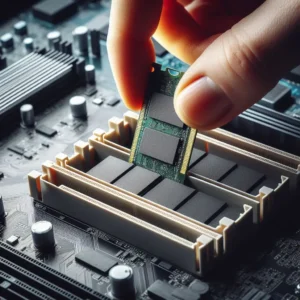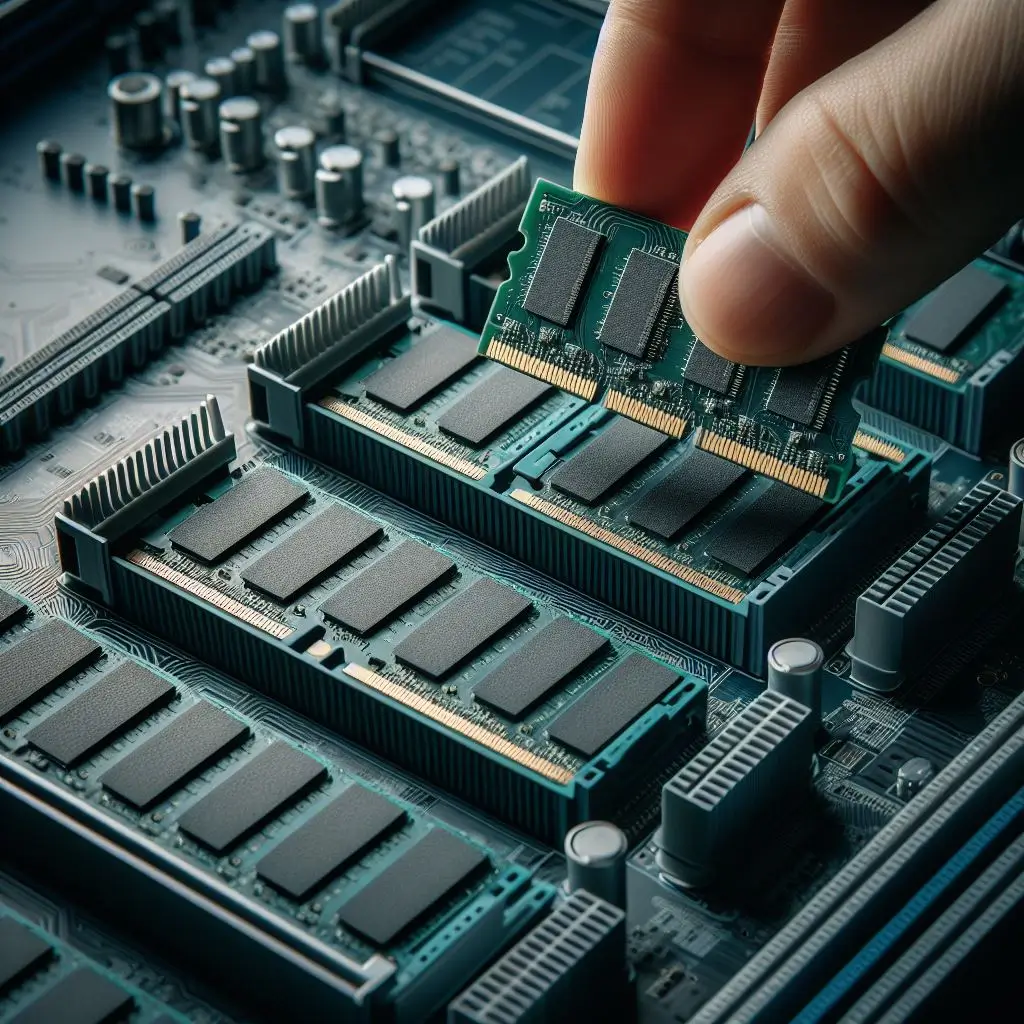Memory management is critical in computing for achieving peak system performance. As programs become more resource-intensive, the need for optimal memory utilization increases. This has resulted in the development of novel approaches including active memory expansion.
Understanding Memory Expansion
What is memory expansion?
Memory extension is the process of extending the effective size of physical memory beyond its original capacity. This can be accomplished through hardware or software techniques, allowing systems to handle bigger workloads without requiring additional physical RAM.
Types of Memory Expansion
There are two main types of memory expansion: passive and active. Passive memory extension merely adds physical RAM modules to the system, but active memory expansion uses clever algorithms to dynamically manage memory allocation.
What is Active Memory Expansion?
Active memory expansion is a dynamic memory management strategy that uses compression algorithms to improve the system’s effective memory capacity. Unlike passive memory extension, which relies primarily on physical RAM modules, active memory expansion actively compresses memory pages to make room for new data.
How does Active Memory Expansion Work?
At its foundation, active memory expansion uses advanced compression algorithms to identify and compress memory pages that are not currently in use. These compressed pages are subsequently kept in a separate memory pool, allowing the system to free up important RAM space for other operations.
Advantages of Active Memory Expansion
Active memory expansion has several significant benefits. It improves framework execution by productively utilizing physical memory assets, guaranteeing that available memory is utilized successfully to extend efficiency. This brings down the require for costly Ram upgrades, resulting in cost savings for businesses. Furthermore, dynamic memory augmentation reduces disk swapping, which can severely slow down system performance. By storing data in memory rather than transferring it to disk, overall system responsiveness improves, resulting in smoother operation and better user experiences.
Disadvantages of active memory expansion
Active memory extension, while its benefits, has certain problems. Compression and decompression procedures may add overhead, affecting system performance, particularly in latency-sensitive applications. Active memory expansion may be ineffective in settings with highly compressible data since there are fewer opportunities for large memory savings. Furthermore, compatibility difficulties with specific hardware configurations may develop, creating implementation hurdles and potentially limiting the availability of active memory extension features on specific systems. Organizations should carefully consider these aspects when determining if active memory extension is appropriate for their computing environments.
Implementing Active Memory Expansion
Hardware Requirements
While active memory expansion can be done on a wide range of hardware platforms, it normally requires systems with adequate CPU resources to conduct compression and decompression activities efficiently. Additionally, systems with plenty of disk space are useful for storing compressed memory pages.
Software Considerations
Active memory extension requires software support from the operating system and the appropriate device drivers. It is critical to establish compatibility with the chosen hardware platform and to tailor memory expansion settings to workload needs.

Use Cases of this Memory Expansion
AME is used in a variety of computing contexts. It minimizes memory utilization on virtualized servers, hence improving overall performance. Cloud computing systems use it to efficiently manage resources and handle variable workloads. Active memory extension in big data analytics speeds up processing by increasing memory capacity. High-performance computing benefits from its potential to improve system responsiveness and throughput, which are essential for demanding computational workloads. Overall, dynamic memory augmentation is important in a variety of contexts because it ensures optimal memory consumption while also boosting computing system scalability and performance.
Comparison with Traditional Memory Expansion
Unlike traditional memory extension methods, which rely entirely on physical RAM upgrades, active memory expansion provides a more cost-effective and dynamic alternative. Active memory extension, when managed wisely, can provide equivalent performance improvements without requiring extra hardware investments.
Future Trends for this Memory Expansion
As the demand for memory-intensive applications grows, AME is expected to become increasingly important in modern computer environments. Future trends may include improving compression methods, increasing compatibility with various hardware configurations, and incorporating dynamic memory augmentation into upcoming technologies like edge computing and artificial intelligence.
Challenges and Limitations
Despite its advantages, this memory expansion is not without obstacles. One notable constraint is the possible overhead provided by compression and decompression procedures, which can degrade system performance, especially in latency-sensitive applications. Additionally, compatibility difficulties with specific hardware configurations may pose barriers to wider adoption.
Best Practices for Using this Memory Expansion
To fully realize the benefits of dynamic memory augmentation, companies should follow best practices. Prior to deployment, thorough compatibility testing guarantees that the system integrates seamlessly with current hardware and software setups. Regular monitoring of system performance data enables the timely detection and reduction of possible bottlenecks, resulting in consistent efficiency. Routine maintenance methods ensure the proper performance and lifetime of AME systems. Keeping up with improvements in compression algorithms and hardware technologies allows enterprises to capitalize on the newest breakthroughs, optimize performance, and remain competitive in the dynamic computing world.
Conclusion
Active memory expansion is a tempting solution for enterprises looking to maximize storage use and improve system performance without making large hardware investments. Dynamic memory augmentation allows systems to handle bigger workloads while also improving overall efficiency by intelligently compressing memory pages and dynamically controlling memory allocation. While there are certain drawbacks, such as potential overhead and compatibility difficulties, the benefits of active memory expansion outweigh these restrictions, making it an important tool in today’s computing environment.
FAQs
Is active memory expansion equivalent to virtual memory?
No, AME and virtual memory are different concepts. Virtual memory uses disk space to extend physical memory, whereas active memory expansion uses compression technologies to improve a system’s effective memory capacity.
Can active memory expansion enhance system performance?
Yes, AME can boost system performance by efficiently managing memory allocation and reducing the requirement for disk swapping, lowering latency and increasing overall responsiveness.
What are the primary hurdles to implementing active memory expansion?
The primary problems of implementing active memory expansion include potential overhead from compression and decompression operations, compatibility issues with specific hardware configurations, and limited effectiveness in cases involving highly compressible data.
Is active memory expansion compatible with any hardware configuration?
While active memory extension can be implemented on a wide range of hardware platforms, some configurations may cause compatibility concerns. To ensure best performance, rigorous compatibility testing should be performed prior to implementation duties and increase overall efficiency.
How might businesses profit from using active memory expansion?
Businesses can profit from active memory extension by enhancing memory utilization, lowering hardware costs, and increasing system performance. Active memory expansion allows companies to handle bigger workloads while improving overall efficiency by dynamically controlling memory allocation and efficiently compressing memory pages.

















